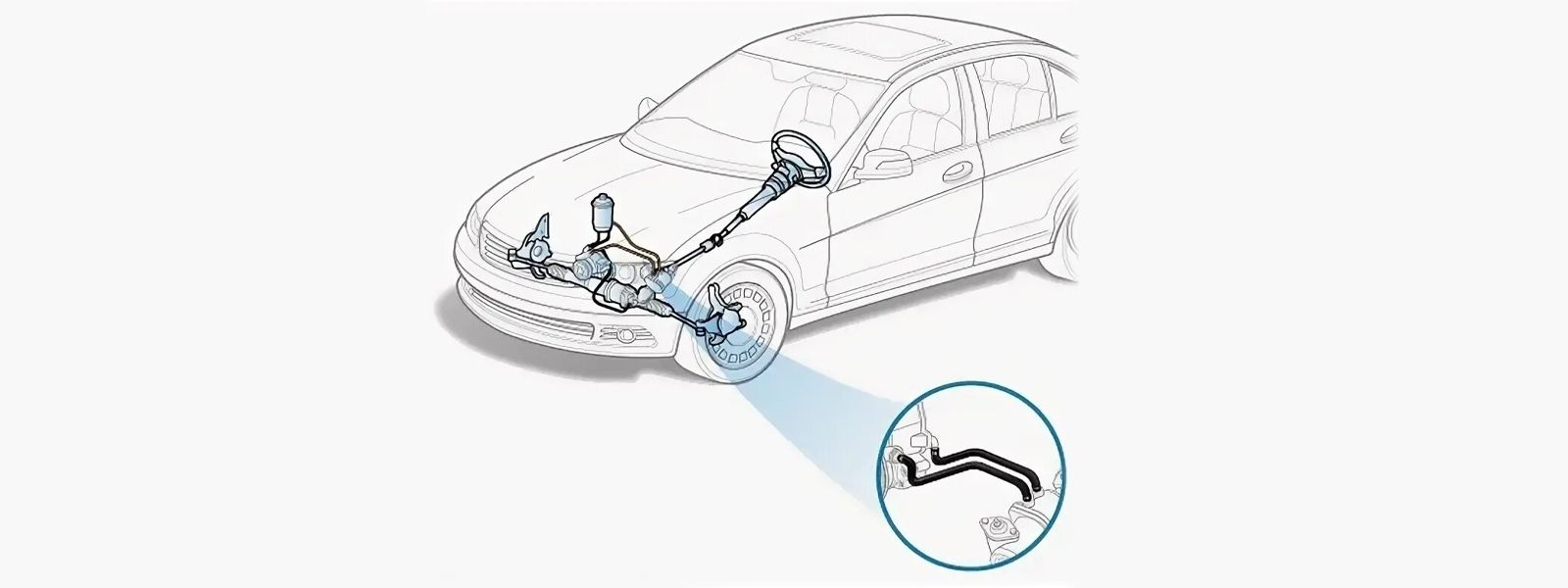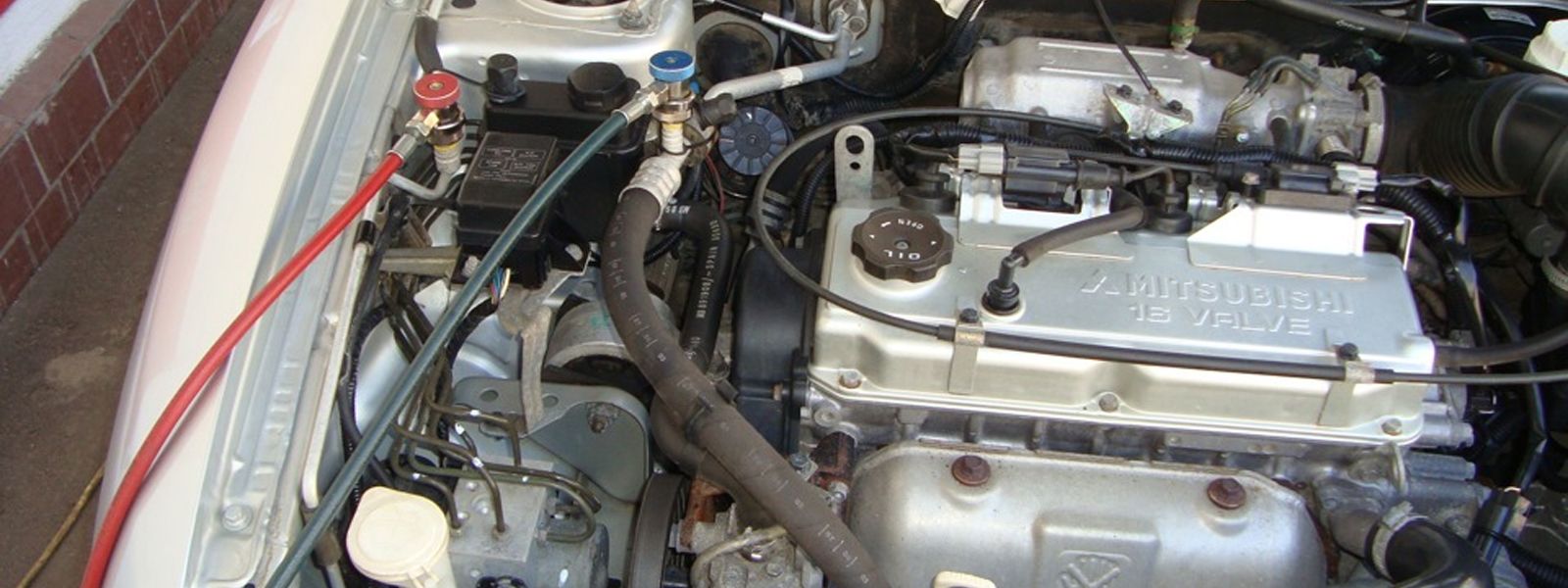
Difference between High and Low Pressure Power Steering Hose

Explore the key differences between high and low pressure power steering hoses. It highlights their roles in fluid delivery and return, and maintenance tips for optimal performance. Understanding these distinctions for effective power steering management.
Suggested A-Premium Parts
What is a power steering hose
Power steering hoses are an essential component of a vehicle's steering system. They transport the hydraulic fluid that helps the power steering system to function properly. There are two main types of power steering hoses: high pressure and low pressure. In this blog post, we'll discuss the difference between high and low pressure power steering hoses and why they are important for your vehicle.
Things to know about high pressure power steering hose
The high pressure power steering hose is responsible for carrying the hydraulic fluid from the power steering pump to the steering rack. This type of hose is typically made of a durable material, such as steel or synthetic rubber, and is reinforced with layers of wire or other materials to prevent leaks and ruptures. High pressure hoses are designed to withstand the high pressure of the hydraulic fluid, which can reach up to 1,500 PSI. They are most often used during tight turns and other maneuvers that require a lot of force, such as parking or parallel parking.
A quick guide on low pressure power steering hose
The low pressure power steering hose is responsible for carrying the hydraulic fluid from the power steering rack back to the power steering pump. Compared with high pressure power steering hoses, this type of hose is typically made of a more flexible material, such as synthetic rubber or thermoplastic, and is not reinforced like high pressure hoses. By installing low pressure hoses, people mean to handle the lower pressure of the hydraulic fluid, which typically ranges from 75-150 PSI. They are used during normal driving and idling and are not subjected to as much stress as high pressure hoses.
High pressure VS low pressure power steering hose, what are the differences
High pressure and low pressure power steering hoses have different functions in a vehicle's power steering system. The two types of hoses have different design characteristics to handle their respective pressures and fluid flows. They differ from each other in these aspects:
- Pressure rating: As the name suggests, high pressure hoses are designed to handle high-pressure fluid flow, while low pressure hoses are designed for low-pressure flow. High pressure hoses are typically rated to handle pressures of up to 1,500 psi, while low pressure hoses are rated at around 250 psi.
- Construction: High pressure power steering hoses are typically constructed with multiple layers of reinforcement, such as braided steel or synthetic fibers, to handle the high-pressure flow of the power steering fluid. Low pressure hoses, on the other hand, are often constructed with a single layer of reinforced rubber or synthetic material.
- Size and shape: High pressure hoses are typically smaller in diameter than low pressure hoses to handle the higher pressure flow. They also tend to have a more rigid shape, whereas low pressure hoses are more flexible.
- Connections: High pressure hoses often use threaded fittings that require special tools to install, while low pressure hoses typically use clamps or quick-connect fittings that are easier to install.
Using the correct type of hose for a vehicle's power steering system is crucial for ensuring proper operation and safety. Malfunctioning power steering systems can make it difficult to steer the vehicle, which can be dangerous in emergency situations. High and low pressure power steering hoses serve different functions in the power steering system and using the correct type of hose can prevent damage to other components and extend the lifespan of the power steering system. Additionally, different vehicles may require different types of hoses depending on the design of the power steering system, and using the correct type of hose ensures compatibility and prevents leaks and other issues.
How to maintain power steering pressure hose
Maintaining the power steering pressure hose is important to ensure the proper functioning of the power steering system and prevent leaks or other issues. Following the guide to take your regular maintenance:
- Regular inspection: Inspect the power steering pressure hose regularly for signs of wear, damage, or leaks. Check the hose for any cracks, bulges, or splits that may indicate a weakened area. Also, inspect the hose fittings, clamps, and connectors for any signs of damage or corrosion.
- Check fluid levels: Keep an eye on the power steering fluid level and add more fluid as necessary. Low fluid levels can cause the power steering system to work harder and increase the pressure on the power steering pressure hose, potentially leading to leaks or other issues.
- Use the correct fluid: Use the correct type of power steering fluid recommended for your vehicle. Using the wrong type of fluid can damage the power steering system, including the power steering pressure hose.
- Avoid extreme temperatures: Try to avoid exposing the power steering pressure hose to extreme temperatures. Extreme heat can cause the hose to become brittle, while extreme cold can cause it to become stiff and inflexible. If possible, park the vehicle in a garage or shaded area to protect the power steering system from extreme temperatures.
- Be gentle with the steering wheel: Avoid turning the steering wheel to the full extent of its range, as this can put extra strain on the power steering system and the pressure hose. Also, avoid jerking or forcing the steering wheel, as this can damage the power steering system and increase the risk of leaks.
- Replace when necessary: If you notice any signs of wear, damage, or leaks in the power steering pressure hose, it's important to replace it as soon as possible. Delaying repairs can lead to more serious damage to the power steering system and potentially compromise your safety while driving.
Conclusion
In conclusion, understanding the difference between high and low pressure power steering hoses is essential for the proper functioning and safety of a vehicle's power steering system. The materials, construction, and pressure ratings of these two types of hoses are all tailored to their specific functions and must be used correctly. Failure to use the correct type of hose can result in leaks, damage to other components, and potential safety hazards. What’s more, regular inspection, proper maintenance, and timely replacement of damaged hoses are crucial to keep the power steering system in good condition. By following these guidelines, divers can ensure the optimal performance and longevity of their power steering system, and ultimately, their own safety while on the road.










